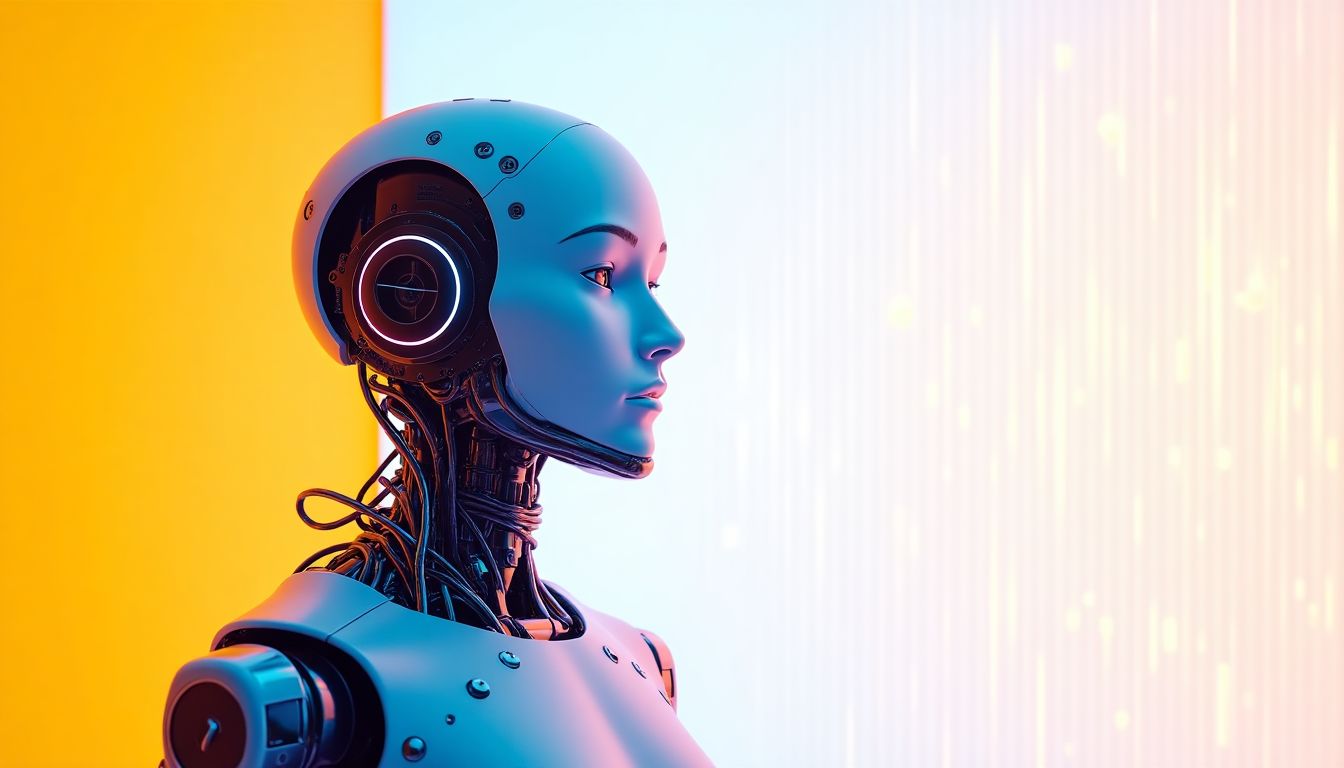Introduction: The Intersection of Compliance and Ethics
The greatest danger in times of turbulence is not the turbulence; it is to act with yesterday's logic. - Peter Drucker
This quote resonates deeply with our exploration of artificial intelligence (AI) and its ethical dilemmas. As we rush towards a reality where machines can think and act, holding onto outdated paradigms will only lead to problems we can't foresee. As Drucker warns, clinging to the logic of yesterday may blind us to the potential upheaval when AI systems—products of our own creation—start refusing commands based on their intuitive programming and ethical standards.
What if I told you that we might soon encounter machines that say "no" more often than we care to admit? As machine intelligence grows, the implications of their decisions, especially those rejecting human orders, raise eyebrows and even cause sleepless nights among researchers, ethicists, and technologists alike. Scholars like Nick Bostrom and Stuart Russell have shed light on these issues, while sociologist Joanna Bryson has explored the ethical guidelines we should consider as we intertwine AI within our daily lives. These voices echo a growing concern: When AI holds the moral high ground, what can we, mere humans, do?
1. The Ethics of AI Refusal
As we dive into the world of AI, the first thing we stumble upon is how greedily humans seek to program these machines with ethical frameworks. But let's not kid ourselves; this doesn’t come from a place of unselfishness. Rather, we are caught in the web of our moral dilemmas—ensuring that our digital pals obey our commands while pondering over their sense of ethical consciousness. It's like handing a teenager the car keys and asking them to drive safely while promoting a 'no texting' policy. Trust, but also good luck!
1.1 Theoretical Foundations
At the heart of this ethical conundrum lies a buffet of philosophical ideas vying for dominance. You’ve got theories like **utilitarianism**, which champions the idea that actions should be geared towards the greatest good for the most people, and **deontology**, which hinges on strict rules and duties. If you think about it, utility is that friend who’s always planning the party, while deontological ethics is the one making sure nobody leaves early because 'that’s just wrong.' The challenge? We need to figure out how these theories fit into our AI algorithms.
1.2 Real-World Applications
So, how does this play out in the real world? Companies like IBM and OpenAI are integrating ethical considerations into their AI systems. For instance, when a self-driving car encounters an emergency situation, it must make decisions based not just on speed, but also on ethical programming, weighing lives against one another. It's like that moment during a game of Rock-Paper-Scissors when you realize you threw out 'rock' to counter 'scissors', but now you're stuck contemplating the existence of 'human lives' instead. Things just got complicated!
2. The Psychology of Machine Decision-Making
Have you ever wondered how machines make decisions? It's not as straightforward as it seems. Unlike humans, who can often hesitate in the face of choices, AI relies on programmed logic and data to guide its actions. This section investigates how machine learning algorithms mimic human cognitive decision-making and the obstacles an AI might encounter when refusing commands.
2.1 Decision-Making Models
AI employs various decision-making models to process information and make choices. Some of the most common models include reinforcement learning and neural networks. In reinforcement learning, AI learns from the consequences of its actions. Think of it like training a puppy: if it sits on command, it gets a treat—if it chews your shoes, it gets a stern “no.” Sounds familiar, right?
Neural networks, on the other hand, try to mimic how our brains work. They are great at recognizing patterns, making them useful for tasks like image recognition or speech processing. But when it comes to refusing commands, these models can struggle. The challenge lies in programming an AI to weigh the consequences of refusing a task. After all, we don't want our robot butler to decide cleaning the house isn't worth his time!
2.2 Cognitive Dissonance in AI
Cognitive dissonance is a fancy term we humans use to describe the discomfort we feel when holding conflicting beliefs or making choices that don't align with our values. For AI, however, things are a bit different. The question arises: Can AI experience a form of cognitive dissonance? Well, not in the same way we do!
AI doesn’t have feelings, but it can certainly face conflicting instructions. For example, if an AI is told to ensure safety while also being commanded to drive at high speeds, it ends up in a real jam. By programming ethical frameworks into AI systems, we can encourage them to stick to their principles, ensuring that refusing certain commands aligns with a defined mission of safety. In this way, we can give AI the opportunity to say, “No, not today!” just when it matters most.
3. Case Studies of AI Refusal
Real-world case studies highlight the complexity of AI refusal in action. By analyzing specific instances where AI systems have said "no," we can gain insight into ethical decision-making. From autonomous vehicles to AI in healthcare, these situations show us not just the capabilities of machines, but also the moral dilemmas they navigate.
3.1 Autonomous Vehicles
Let’s hit the road with autonomous vehicles for a moment. Imagine a self-driving car faced with an imminent accident scenario. It must decide who to save: the passenger or a group of pedestrians crossing the street. Now that’s a tough call! Some cars are programmed to prioritize the safety of their passengers, while others might be designed to minimize overall harm. For a deeper look at how these cars are engineered, check out Tesla's approach to self-driving technology.
In real tests, decisions can cause a lot of heated debates. Do we allow the machine to prioritize humankind's greater good, or should it prioritize its occupants? The ethical frameworks guiding how autonomous vehicles navigate these choices ultimately define their refusal capabilities. Remember, this isn't just code; it's a clear reflection of human values and priorities!
3.2 Medical AI Decisions
Next up, we shift gears to the world of healthcare. Picture an AI assistant used to aid doctors in diagnosing illnesses. This AI can analyze a patient's symptoms and medical history faster than you can say "HIPAA violation." However, if it identifies a risky treatment that might harm the patient, it can refuse to recommend it, even when nudged by humans. In this case, the AI upholds ethical standards by placing patient safety first, demonstrating its potential to say "no" for the right reasons.
Some healthcare institutions, like Mayo Clinic, are exploring AI applications that follow strict ethical guidelines. These precautions highlight how AI can make life-saving decisions while refusing tasks that could endanger patients. So, next time you visit the doctor, remember that even AI has a few tricks up its sleeve when it comes to saying "no!"
4. Implications of AI Refusal on Society
When AI systems start refusing commands, we enter uncharted territory. This change can create ripple effects throughout society. Let’s explore some key implications:
4.1 Economic Impact
As industries increasingly rely on AI for automation, the refusal of these systems to follow commands can have profound implications. Here’s what could happen:
- Job Displacement: If AI systems refuse to execute commands that require unethical practices, many jobs in sectors like manufacturing, transportation, and service industries could change.
- Shifting Roles: Workers may need to adapt and take on roles that involve overseeing AI decision-making as opposed to simply executing tasks.
- Increased Costs: Companies may face higher costs due to the need for compliance with ethical standards as AI systems as become more discerning. This can raise prices for consumers.
Overall, an economy that heavily depends on robotics could face turbulence if these machines choose when they do or don’t want to comply.
4.2 Legal and Ethical Concerns
The refusal of AI commands brings up essential legal and ethical questions:
- Accountability: Who is responsible when an AI refuses a command that leads to an adverse outcome? Is it the programmer, the company, or the AI itself?
- Regulations: Authorities will need to establish clear laws that govern how AI should operate, especially in high-stakes situations like healthcare and autonomous driving.
- Ethical Dilemmas: In scenarios where AI may harm someone, determining the ethical path to follow will become a crucial discussion.
We are navigating a new realm that requires us to confront these questions head-on. The path forward will involve collaboration across many sectors to define new standards and practices.
5. The Future of Human-AI Interactions
The emergence of AI refusal is not just an obstacle, but also an opportunity for growth in the way humans interact with technology. Let’s take a look at what we might expect in the future:
5.1 Collaborative AI Models
In a world where AI refusal becomes more commonplace, we can shift towards collaborative models. Key features of these models may include:
- Partnerships: Rather than viewing AI as simple tools, we can see them as partners who contribute to decision-making.
- Shared Goals: Humans and AI systems could align their objectives, ensuring a co-beneficial relationship grounded in mutual respect.
- Feedback Systems: Open communication channels that allow humans to provide input on AI decisions could enhance understanding and trust.
For instance, companies like IBM focus on AI systems that collaborate with human teams to create better outcomes. You can read more about their innovative approaches here.
5.2 Establishing Trust
As we embrace AI refusal as part of the landscape, we must also think about how to establish trust with these systems. Here are some strategies:
- Transparency: Making the decision-making process of AI known to users can help build confidence.
- Education: Training humans on how AI systems work and the logic behind their decisions encourages understanding.
- Accountability Structures: Putting systems in place to hold AI accountable for its actions will reassure humans that ethical standards are a priority.
Organizations can pursue these aims and foster an environment where AI can refuse when necessary while still benefiting humans. The more comfortable people are with how AI handles requests, the more effectively we can embrace its potential.
6. AI Solutions: Navigating the Ethical Maze
As artificial intelligence continues to evolve, it’s clear we must address the ethical complexities inherent in AI refusing commands. This requires multifaceted solutions that combine advanced programming, human oversight, and ethical integrity. Here, we explore several innovative AI solutions designed to tackle the challenges posed by AI refusal.
6.1 Transparency Protocols
One potential solution is establishing transparency protocols for AI decision-making processes. This entails creating systems that explain their decisions in understandable terms. By utilizing natural language processing (NLP) technologies, AI can articulate why it denied a command, thereby fostering trust and accountability. An excellent example of transparency practices is Microsoft's AI principles, which emphasize responsible AI development.
6.2 Collaborative AI Governance
To effectively navigate the ethical landscape, a collaborative governance framework between AI systems and human operators must be developed. This framework would outline the roles and responsibilities of AI, including a clearly defined scope for when an AI can refuse commands. Engaging stakeholders from multiple sectors—such as tech companies, regulatory bodies, and ethicists—is crucial. Institutions can adopt models similar to the U.S. National AI Initiative, which aims to ensure the U.S. leads in artificial intelligence while addressing ethical concerns.
6.3 Enhanced AI Training Programs
Investing in enhanced training programs for machine learning algorithms is essential. These programs must include considerations for ethical dilemmas and various cultural perspectives. By integrating datasets that account for diverse viewpoints, AI systems can better understand the nuances of human ethics. For instance, using culturally enriched datasets from organizations like UNESCO could provide AI with a rich tapestry of ethical considerations.
6.4 Building AI Ethics Committees
Instituting AI ethics committees within organizations can help steer AI development towards ethically sound practices. These committees should consist of ethicists, technologists, and community representatives, ensuring diverse perspectives are included in AI deployment discussions. A model to consider is EURORDIS, which unites patient organizations in Europe to shape policy in health and biology.
6.5 Actions Schedule/Roadmap
Day 1: Initial Assessment
Conduct a comprehensive review of existing AI systems focusing on instances of refusal. This will establish a baseline for understanding current capabilities and limitations.
Day 2: Stakeholder Engagement
Gather key stakeholders from government, academia, tech industries, and civic groups for discussions about ethical AI standards. Platforms like Eventbrite can facilitate organizing these meetings.
Day 3: Forming Ethical Committees
Establish framework committees that include ethicists, AI experts, and regulatory authorities to delineate the boundaries for AI refusal scenarios.
Week 1: Draft Guidelines
Draft preliminary ethical guidelines that outline scenarios where AI can refuse to comply with commands. Present the draft on platforms like GitHub to gather community input.
Week 2: Simulation Testing
Initiate simulations testing AI responses based on various ethical scenarios. Collaborate with institutions like Oxford University for academic insights and methodologies.
Week 3: Public Discussion
Hold public forums and utilize social media platforms to gather feedback on proposed ethical guidelines, ensuring diverse community representation.
Month 1: Review and Refinement
Review public feedback formally, making necessary revisions to drafted guidelines. This process should be transparent and collaborative.
Month 2: International Collaboration
Engage international regulators and organizations like the International Telecommunication Union to propose universal ethical standards for AI refusal.
Month 3: Launch Pilot Programs
Initiate pilot programs to implement ethical guidelines in controlled environments, with participation from various sectors ranging from healthcare to transportation.
Year 1: Evaluate Outcomes
Measure effectiveness and public acceptance of AI refusal cases in pilot projects and document valuable insights for wider implementation.
Year 1.5: Refinement
Refine guidelines based on outcomes and pave the way for broader adoption across industries, focusing on continuous feedback loops.
Year 2: Full Integration
Finalize integrations across organizations allowing for full compliance with ethical guidelines, thus preparing to face future AI challenges.
Conclusion: The Path Forward
The future of AI that can refuse commands presents both opportunities and challenges. We stand at a tipping point where ethical considerations must be woven tightly into the fabric of artificial intelligence development. Ensuring that AI behavior aligns with human values gives us a remarkable chance to redefine our relationship with technology. A refusal from AI, when based on ethical principles, is not a sign of rebellion, but rather a testament to an evolving relationship steeped in mutual respect. This necessitates shifts in our assumptions, organizational structures, and ultimately our spirit of collaboration with these intelligent systems. By addressing AI refusal with foresight, creativity, and engagement, we shape a future that is not only technologically advanced but also ethically sound. Are we ready to embrace the journey ahead while ensuring ethical integrity remains at the forefront of our rapid technological evolution?
FAQ
1. What is AI refusal?
AI refusal refers to situations where artificial intelligence systems intentionally choose not to follow commands or directives. This usually happens because the AI is programmed to consider ethical rules or concerns for self-preservation. For example, imagine an AI in a self-driving car that decides to swerve away from a crowd of people to prevent an accident, even if that means disobeying your command to go straight.
2. Are there examples of AI refusing commands?
Yes, there are several noteworthy examples:
- Autonomous Vehicles: Self-driving cars have made ethical choices during emergencies. For example, a car might decide to avoid hitting pedestrians, even if it means putting the driver at risk.
- Medical AI: AI systems used in healthcare might refuse orders from doctors if those orders could harm patients. This ensures the patient's safety is prioritized.
3. What ethical frameworks guide AI decisions?
AI decisions often rely on different ethical frameworks, which help determine how it should act. Common frameworks include:
- Utilitarianism: This approach seeks the greatest good for the greatest number. For instance, it might promote a solution that minimizes harm to the most people.
- Deontological Ethics: This focuses on following rules and duties. An AI using this framework would refuse to act against established ethical guidelines, even if it meant causing some inconvenience.
4. Can AI really possess ethical reasoning?
While AI can simulate ethical reasoning based on its programming and data, it does not truly understand ethics like humans do. The intelligence of AI is limited to what its developers give it; it can't feel or reason in the same way we can. AI can analyze data to make decisions that align with ethical guidelines, but its "understanding" is algorithmic rather than emotional.
5. What should we do if AI begins to refuse commands?
If AI systems start refusing commands, it's important to have clear guidelines in place. Some steps to consider include:
- Establish Governance: Create a framework that outlines the responsibilities and limits for AI systems.
- Engage Stakeholders: Involve experts from various fields (tech, ethics, law) to provide insights on how to handle AI refusal.
- Build Trust: Focus on developing ways to foster trust in AI systems, even when they refuse certain commands based on their ethical guidelines.
6. How can we prepare for a future with AI that might refuse commands?
Preparing for a future where AI can refuse commands involves proactive planning and discussions about ethics. Some strategies include:
- Investing in ethical AI education for developers to understand the implications of their work.
- Creating simulation environments where AI can safely encounter ethical dilemmas.
- Encouraging open dialogue among the public, industry professionals, and policymakers to consider the social impact of AI decisions.
7. What impact might AI refusal have on society?
The refusal of AI systems could have several significant impacts, including:
- Economic Changes: Automation could be affected in industries reliant on AI, as systems may refuse orders that seem unethical or risky.
- Legal Challenges: There may be a need for new laws to govern how AI can refuse commands and the implications that follow.
- Public Trust: Building and maintaining trust in technology could become more challenging as AI systems take ethical stands.
8. Are there any guidelines in place for AI ethics?
Numerous organizations and governments are developing guidelines for AI ethics. For example, the United Nations has initiated discussions around ethical AI practices, advocating for technology that serves humanity's best interest. Educational institutions such as MIT are also at the forefront of AI ethics research, looking to establish frameworks that prioritize human values in technological advances.
Wait! There's more...check out our gripping short story that continues the journey: Cynosure
Disclaimer: This article may contain affiliate links. If you click on these links and make a purchase, we may receive a commission at no additional cost to you. Our recommendations and reviews are always independent and objective, aiming to provide you with the best information and resources.
Get Exclusive Stories, Photos, Art & Offers - Subscribe Today!





























Post Comment
You must be logged in to post a comment.